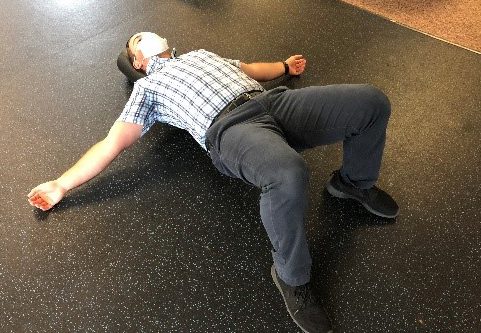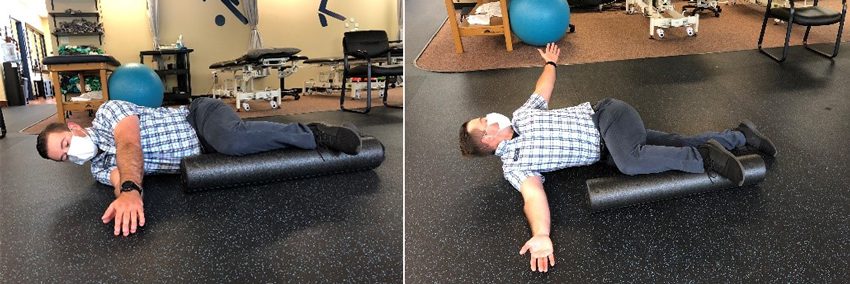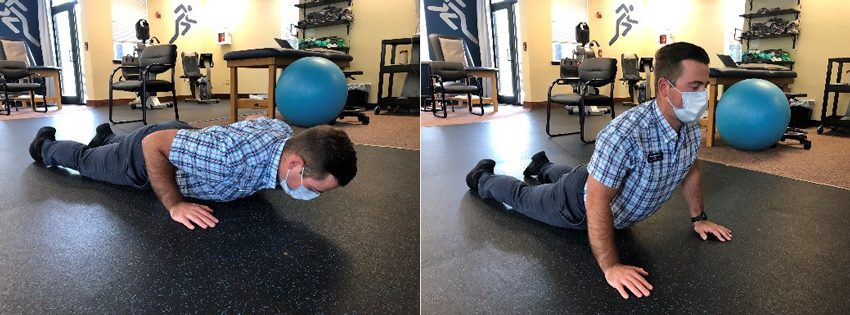
BY DYLAN CHISHOLM, DPT
As swell season is here for the avid surfer of the Northeast. We want to help make sure the biggest pain you have is getting in and out of the 6mm wetsuit and not your shoulders. Due to the nature of the sport, surfing requires extensive strain through the shoulders. Both paddling and the pop up are stressful repetitive movements of the shoulder. Frequently, in the surfer, shoulder pain is the result of sub-acromial impingement syndrome. Impingement is due to chronic and repetitive compression or “impingement” of the rotator-cuff tendons and the bursa in the shoulder, causing tendinitis, bursitis, and if left untreated rotator cuff tears.
Surfing requires good mobility of the shoulders as well as the thoracic and lumbar spine in addition to significant strength of the shoulders and core. If mobility or strength deficits are present, movement pattern dysfunction will occur and result in excess stress placed on the soft tissue structures causing tendinopathies.
Below I will introduce 3 mobility-focused exercises and 3 strength-based exercises that if done consistently will help ensure shoulder pain won’t keep you out of the water this year.
MOBILITY

Foam roller pec stretch: Lie on a foam roller with your knees bent and feet flat on the ground. Your palms are facing up and your arms are abducted to a T position. As your flexibility progresses you can change the position of the arms lower and higher to target more muscle fibers. Hold the position for 3-5 minutes.

Thoracic Rotation Stretch: Lie on your side with the top knee bent on a foam roller. Press down in the foam roller with the knee. Both hands are placed together in front of your chest. Keep the bottom arm on the floor, roll back and have the top arm reach back toward the floor, opening up the chest. Make sure you keep your arm in line with the collar bone to preserve the shoulder’s integrity. Think about bringing your shoulder blade down to the floor. Maintain the position as recommended and return slowly to the starting position.

Prone Press Up: Start with your hands under your shoulders. Press up one vertebral level at a time, while keeping your low back and buttocks relaxed. Perform the exercise as far as you comfortably can trying to achieve a good C shape curve, and pause, making sure your buttocks are relaxed. Then return to the starting position.
STRENGTH

T’s and Y’s: Lie on your stomach on a swiss ball or bench with your arms straight and below shoulder level. Squeeze your shoulder blades together as you raise your arms parallel to the floor in a “T” position. Keep your thumbs up and your shoulders and neck relaxed. Repeat into Y position bringing arms 45 degrees above shoulder height.

Plank + serratus PU – core & serratus anterior: Start in a plank position on your toes and forearms—your torso and thighs should form a straight line. Tuck your chin: you don’t want your head to move forward when you do the exercise. Start by lowering your torso toward the ground and then by lifting your torso up to round your upper back to protract your scapula. Keep the body in a straight line at all times during the exercise.

Single Leg Single Arm Row: Stand with your feet hip width apart and hold a weight in one hand. Bend forward on one foot (opposite to weight) to the airplane position and pull the weight towards you by bending at the elbow focusing on squeezing shoulder blade to the spine. Slowly return to the initial position and repeat.
Surfers, give Hampton Physical Therapy a call to help you master those waves even better!






